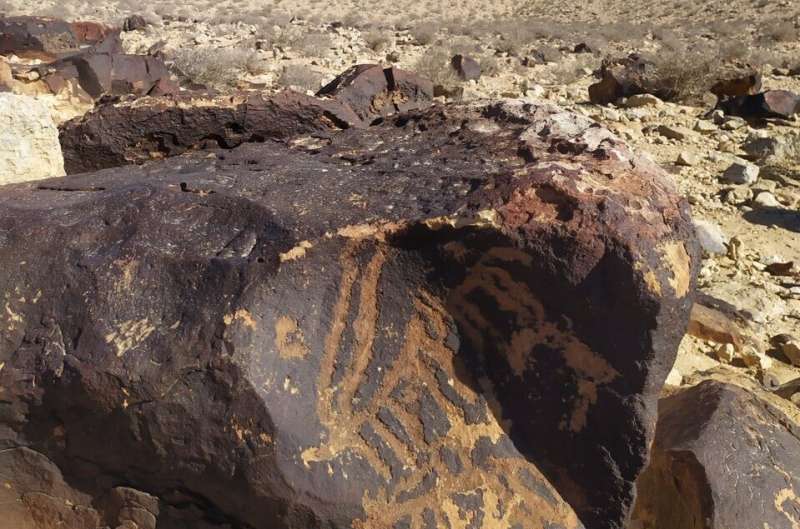
Animal petroglyphs from the Negev. Credit: Laura Rabbachin, INTK, Academy of Fine Arts Vienna
The Negev Desert in southern Israel is renowned for its unique rock art. Since at least the third millennium BCE, hunters, shepherds, and traders traveling through the Negev have left thousands of rock carvings (petroglyphs). Most of these figures are carved into desert varnish: a thin, black layer on limestone rock that forms naturally. Many depict animals such as ibex, goats, horses, donkeys, and domestic camels, but abstract forms are also found.
Now, a study published in Frontiers of fungal biology Petroglyphs are home to a community of rare and specialized fungi and lichens. Unfortunately, these species can pose a serious threat to the rock art in the long term.
“We show that these fungi and lichens could contribute significantly to the progressive erosion and degradation of the petroglyphs,” said Laura Rabbachin, a doctoral student at the Academy of Fine Arts Vienna in Austria and first author of the study. “They are able to secrete different types of acids that can dissolve the limestone in which the petroglyphs are engraved. In addition, the fungi can penetrate and grow in the stone grains, causing additional mechanical damage.”
-
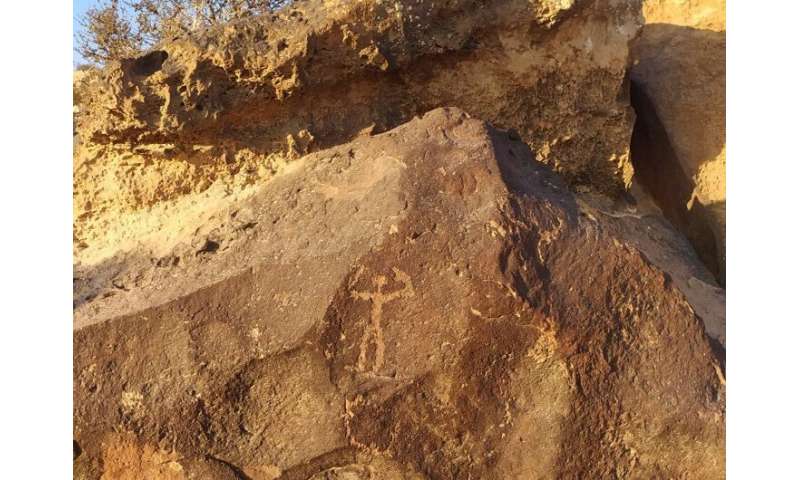
Petroglyph depicting a human figure. Credit: Laura Rabbachin, INTK, Academy of Fine Arts Vienna
-
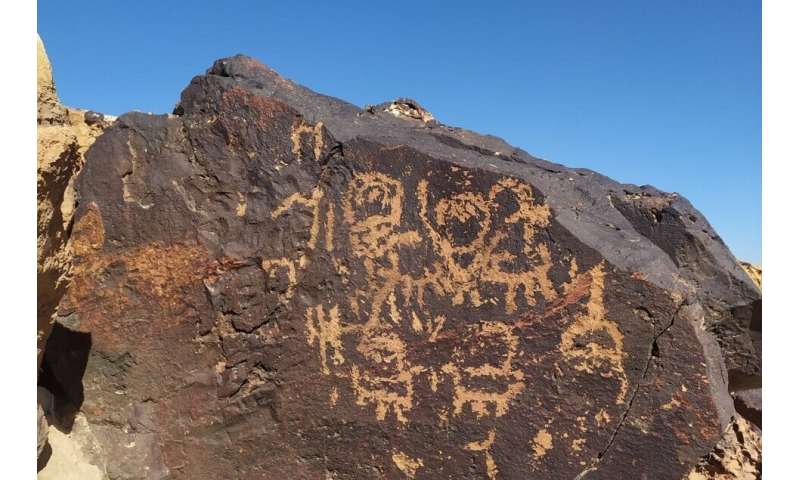
Petroglyphs from the Negev depicting abstract forms. Credit: Laura Rabbachin, INTK, Academy of Fine Arts Vienna
-
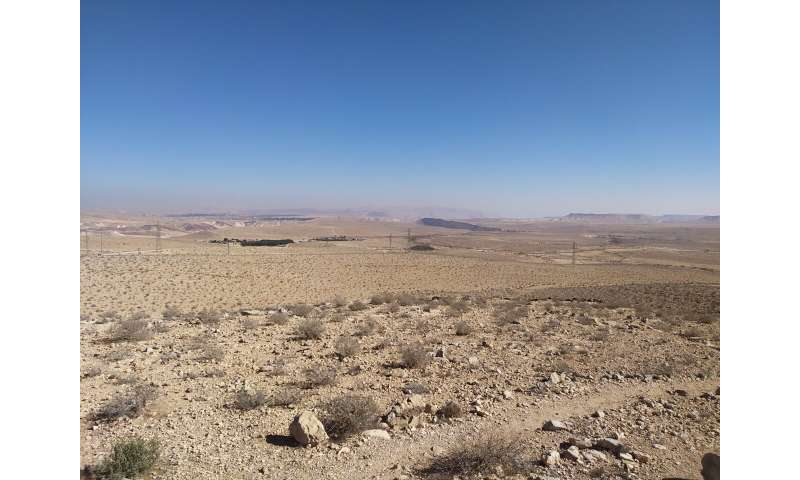
The landscape around the petroglyphs in the Negev desert. Credit: Laura Rabbachin, INTK, Academy of Fine Arts, Vienna
Extreme conditions
Rabbachin and his colleagues collected samples from a petroglyph site in the west-central Negev Highlands. Here, an average of 87 mm of rain falls annually, and temperatures on rock surfaces can reach 56.3 °C in summer. The researchers collected samples from desert varnish next to the petroglyphs, from unvarnished desert rocks, and from the soil near the sampled rocks. They also left open Petri dishes near the rocks to capture airborne spores.
The authors identified the collected fungi and lichens using two complementary methods. First, they repeatedly cultured fungal material or spores from rocks or soils on plates with one of two different growth media until they obtained pure isolates for DNA barcoding. Then, they directly performed DNA sequencing of fungal material present in rock or soil samples, without culturing them first. The latter method allows the detection of strains that do not grow in culture.
Rare but destructive species on petroglyphs
Both methods showed that species diversity and abundance on petroglyph-bearing rocks were low relative to soil, suggesting that few species are able to withstand local extremes of drought and temperature.
DNA barcoding of the cultured isolates revealed that the petroglyphs harbor several species of fungi belonging to the genera Alternaria, Cladosporium, and Coniosporium, while direct sequencing also detected several species from the genera Vermiconidia, Knufia, Phaeotheca, and Devriesia. All, except Alternaria and Cladosporium, are so-called microcolonial fungi, known to thrive in hot and cold deserts around the world. Lichens of the genus Flavoplaca were also abundant.
-

Mushroom culture: Alternaria sp. NS4. Credit: Laura Rabbachin, INTK, Academy of Fine Arts, Vienna
-
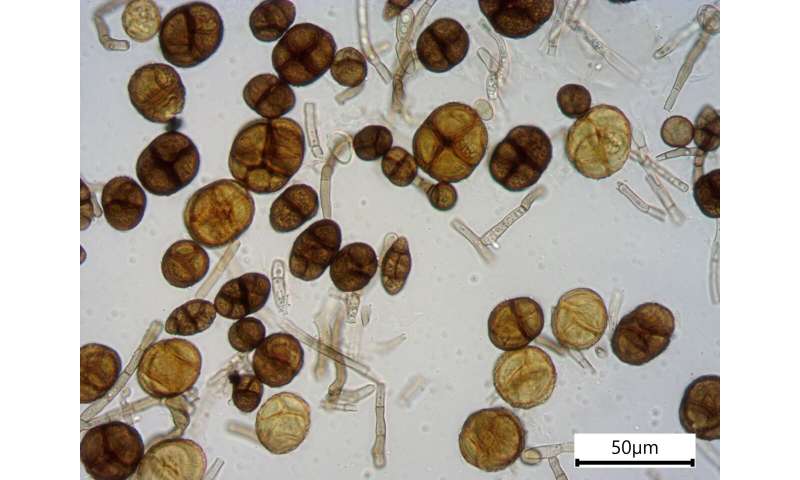
Mushroom culture: conidia of Alternaria sp. NS1. Credit: Laura Rabbachin, INTK, Academy of Fine Arts, Vienna
-
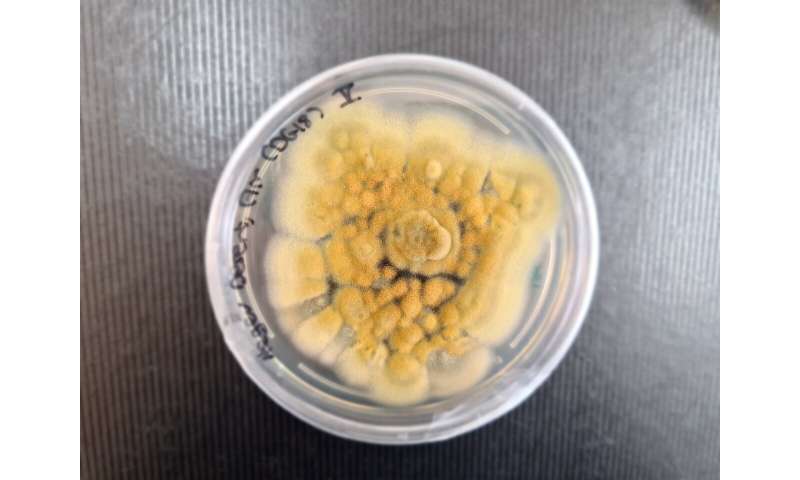
Mushroom culture: Cladosporium limoniforme. Credit: Dr. Irit Nir, Ben-Gurion University of the Negev
“Microcolonial fungi are considered extremely dangerous for stone objects. For example, they have been implicated as a probable cause of deterioration of lithic cultural heritage in the Mediterranean,” Rabbachin said.
“Lichens are also known to cause rock deterioration and therefore pose a potential threat to lithic cultural heritage.”
In the soil and surrounding air, the researchers found mainly different and cosmopolitan fungi, known for their ability to survive the harsh desert conditions through the production of drought-resistant spores.
Documenting threatened rock art is a necessity
Can anything be done to protect the petroglyphs from the slow but destructive work of the observed microcolonial fungi and lichens? It is unlikely, the authors warn.
“These natural weathering processes cannot be stopped, but their speed strongly depends on how the climate will change in the future. What we can do is monitor the microbial communities over time and, most importantly, document these precious works of art in detail,” said Rabbachin’s thesis supervisor, Professor Katja Sterflinger, lead author of the study.
More information:
Diversity of fungi associated with petroglyph sites in the Negev Desert, Israel, and their potential role in bio-alteration, Frontiers of fungal biology (2024). DOI: 10.3389/ffunb.2024.1400380
Quote:Desert-loving fungi and lichens pose deadly threat to 5,000-year-old rock art (2024, July 5) retrieved July 5, 2024 from https://phys.org/news/2024-07-fungi-lichens-pose-deadly-threat.html
This document is subject to copyright. Apart from any fair dealing for the purpose of private study or research, no part may be reproduced without written permission. The content is provided for informational purposes only.